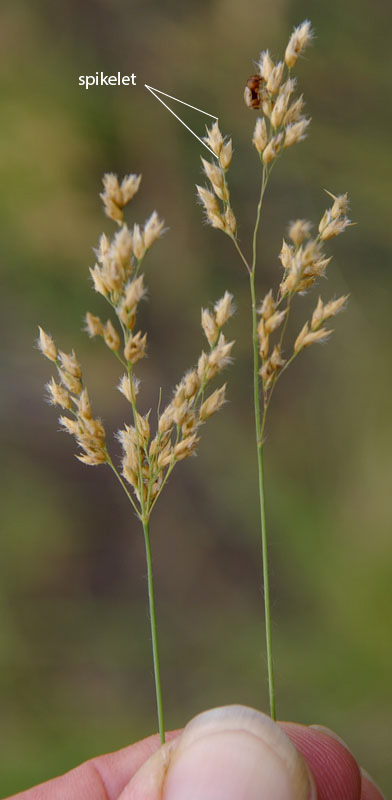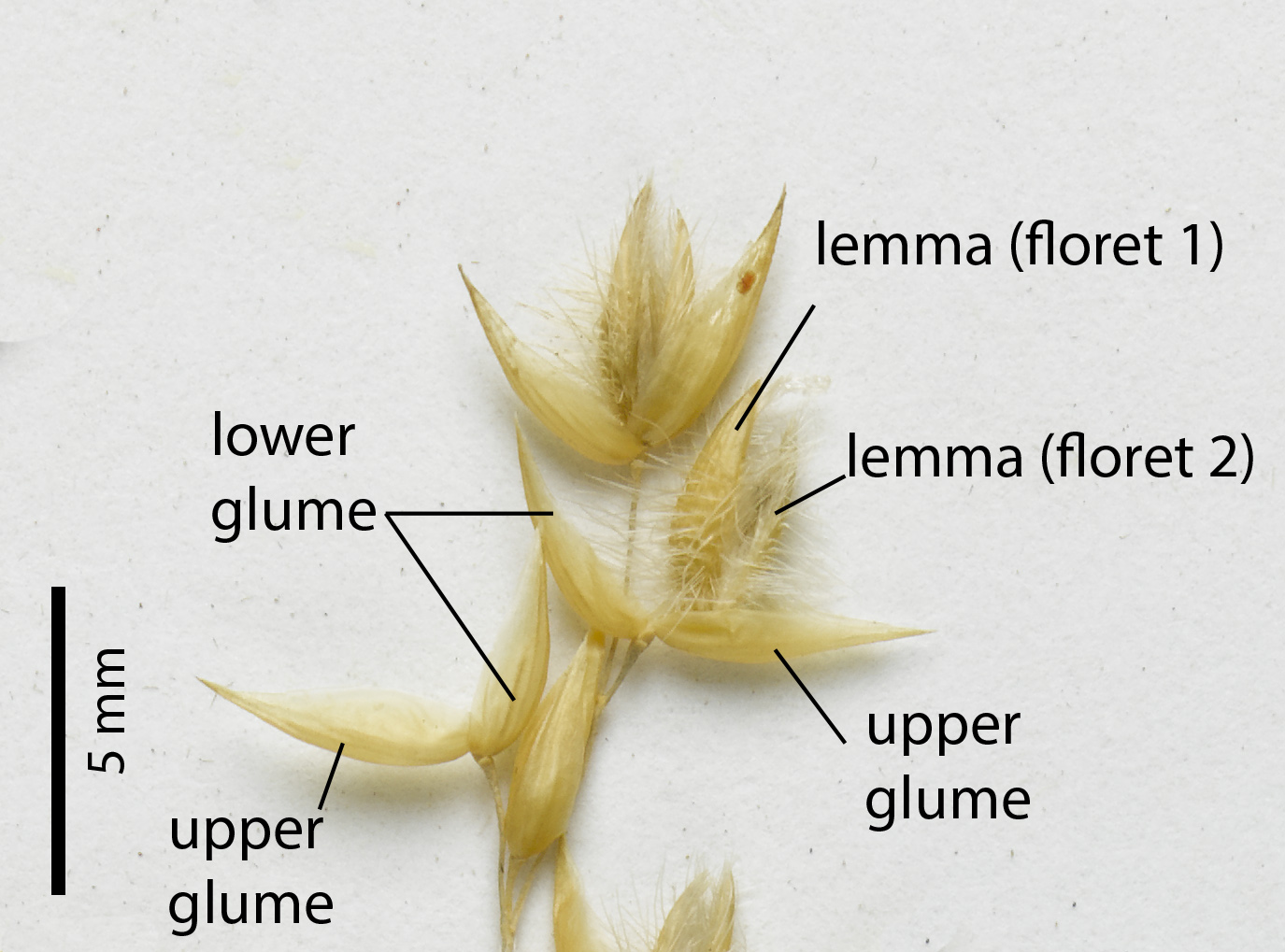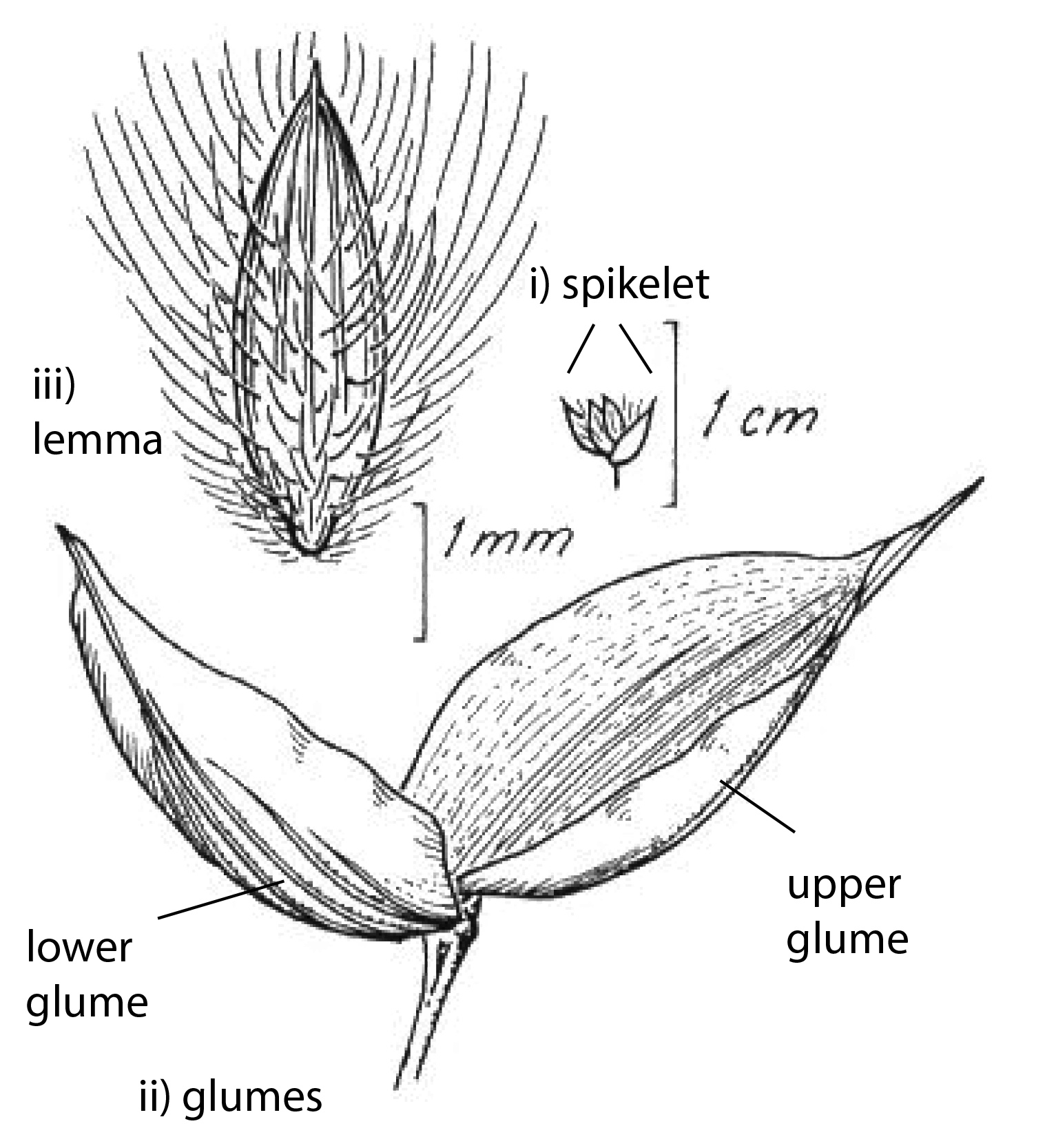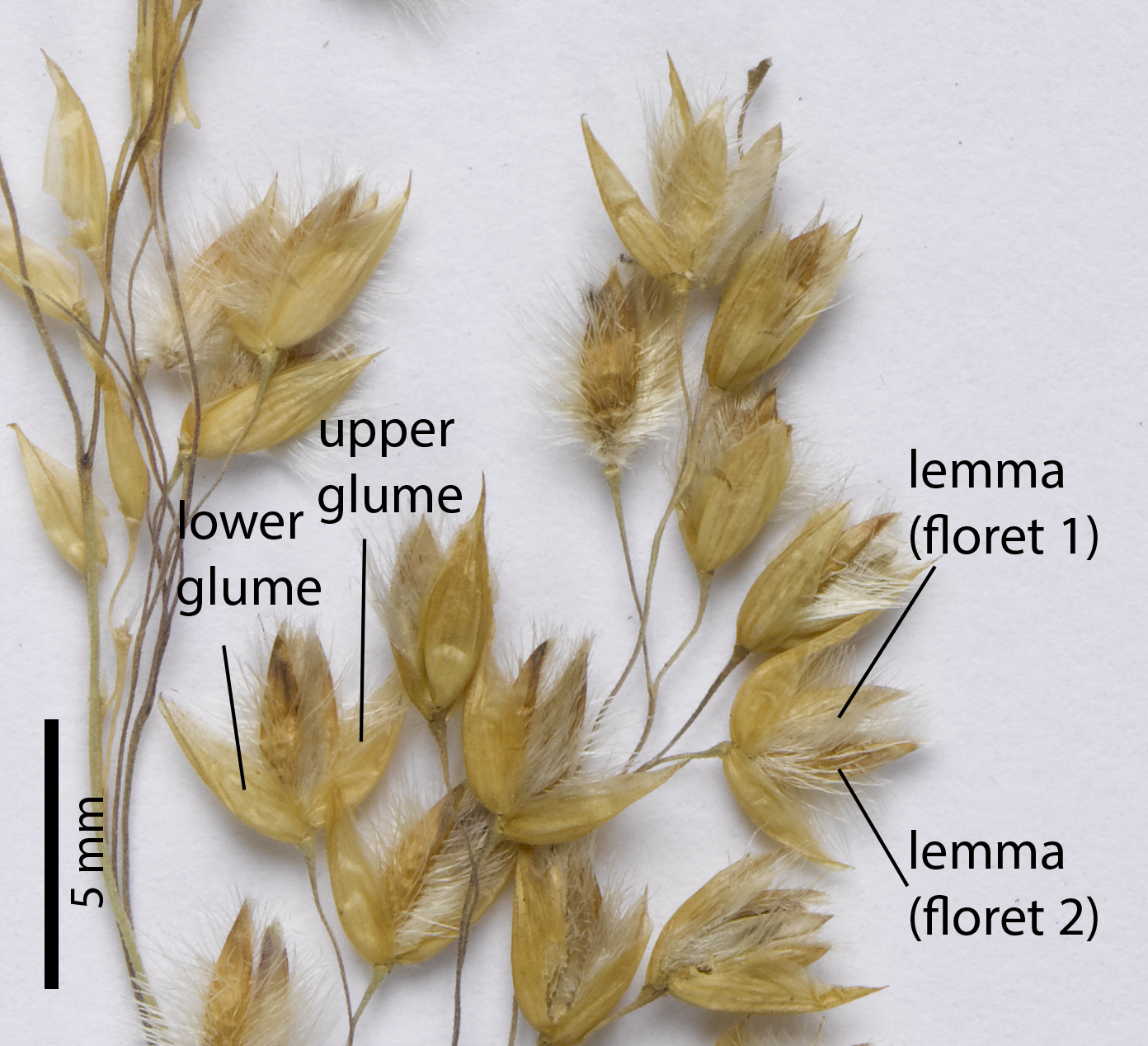Eriachne obtusa
R.Br.
Northern Wanderrie grass
This species is common and widespread throughout Queensland (Qld), Northern Territory (NT) and tropical Western Australia (WA). An erect perennial usually between 30-60 cm high (Fig. 1) with leaves arising along the stem. The leaf blades are up to 16 cm long to 4 mm wide with hairs or without hairs and rough to the touch. Inflorescences or flowering branches terminate the stem and appear well exserted from the leaves. The inflorescences or flowering branches are open panicles with branches arising along a central stem (Fig. 2). Eriachne species commonly have spikelets (the basic flowering unit) consisting of two glumes encompassing two bisexual florets (modified flowers) (Fig. 3 & 4). In Eriachne obtusa, the florets are shorter than the longest glume, with the lemma of each floret awnless and tapering to a fine point, the lemma is densely hairy near the base (Fig. 4iii). The palea of each floret is entire hairy near the base.
Botanical Description
A perennial species 30-60 (-90) cm high. The culms glabrous, nodes pubescent or glabrous. The leaves are glabrous or hispid with tuberculate based hairs, blade to 5-16 cm long, 1-4 mm wide, scabrous or prickly. The inflorescence a panicle between 4-7 cm long and 1.5-3 cm wide. Spikelets consist of a pair of hairy or hairless glumes 4-5 (6.3) mm long, and two bisexual florets. The lemma of each floret is between (3.8-5 mm long, shorter than longest glume). The lemma is awnless with a sharp point, grooves are absent and lemma is hirsute with long hairs in lower ¾. The palea is entire, hairy near base.
Diagnostic Features
Flowering or fruiting specimens of Eriachne are relatively easy to identify by the spikelets consisting of two glumes and two florets (Fig. 3 & 4). Eriachne obtusa is one of the more common and widespread perennial grasses in northern Australia, distinguished by the upright multi-stemmed habit at around knee height (50-60 cm) and the fluffy straw coloured flowering head. In areas outside of Cape York Peninsula, however, it can be easily confused with Eriachne major (which is not currently recognised as a distinct species in Queensland), Eriachne mucronata (Fig. 5) and Eriachne nodosa. Eriachne nodosa is an annual species not recorded for Queensland. Eriachne mucronata is distinguished from E. obtusa by the glumes, equal in E. mucronata (Fig. 5) but uneqal in E. obtusa (Fig. 3 & 4) and the length of the florets relative to the glumes, often longer in E. mucronata and florets slightly shorter than the longer glume in E. obtusa. Eriachne mucronata is not well collected on the Cape north of Cooktown, however, it occurs in higher latitudes in the Northern Territory and may be more common then current collections reflect.
Natural Values
This species is a food source for the golden-shouldered parrot and likely to provide seed for other granivorous or seed eating animals (Crowley et al 2004).
Habitat
This common savanna species grows in a variety of substrates and landscape positions in savanna (Fig 6) (Lazarides 20050). Widespread north of 24°S across northern Australia and common across Cape York Peninsula (Fig. 7).
Land Management Notes
Considered generally to be of low forage value (Milson 2000, Lazarides 2002).




Resources
AVH (2017) Australia’s Virtual Herbarium, Council of Heads of Australasian Herbaria, <http://avh.chah.org.au>, accessed 30 May 2017.
Cowie, I. D. & Short, Philip S. & Osterkamp Madsen, Monika, (2000). Floodplain flora : a flora of the coastal floodplains of the Northern Territory, Australia. Flora of Australia Supplementary Series Number 10. Australian Biological Resources Study: Canberra.
Crowley, G.M., Garnett, S.T. and Shephard, S. (2004). Management guidelines for golden-shouldered parrot conservation. Queensland Parks and Wildlife Service, Brisbane.
Lazarides, M. (1995) The genus Eriachne (Eriachneae, Poaceae). Australian Systematic Botany 8(3): 355-452.
Lazarides, M. (2002) Economic attributes of Australian grasses. Flora of Australia 43: 213-245.
Lazarides, M., Weiller, C.M. & McCusker, A. in Mallett, K. (ed.) (2005) Eriachne. Flora of Australia 44B: 132-175.
Milson, J. (2000) Pasture plants of north-west Queensland. Information Series Q100015. Queensland Department of Primary Industries.
Simon, B.K. & Alfonso, Y. (2011) AusGrass2, http://ausgrass2.myspecies.info/accessed on [20 March 2017].

